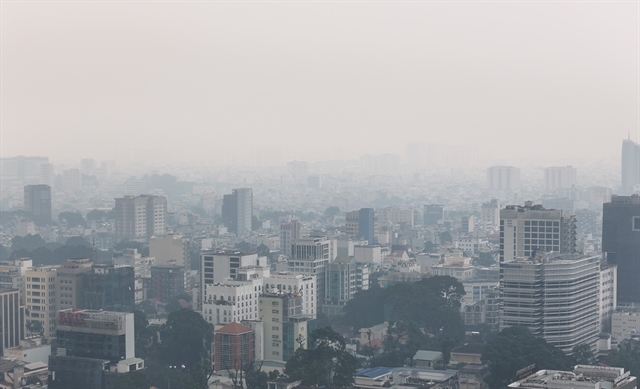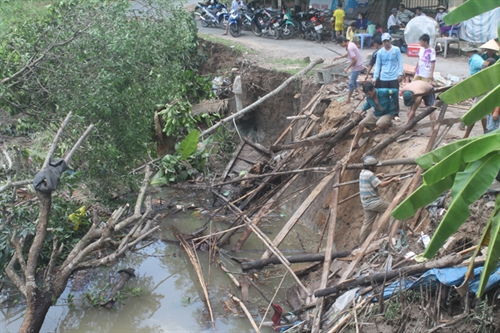 Environment
Environment

There have been more instances of soil erosion along the Cửu Long (Mekong) Delta’s many rivers and canals after the season’s first rains in recent days.
 |
| Slipping away: Authorities help local residents to rebuild after an erosion in Phú An Commune, Châu Thành District, the southern province of Hậu Giang. – Photo baotainguyenmoitruong.vn |
HCM CITY – There have been more instances of soil erosion along the Cửu Long (Mekong) Delta’s many rivers and canals after the season’s first rains in recent days.
Hậu Giang Province’s Châu Thành District is one of the worst hit. On Sunday erosion in Khánh Hội B Hamlet in Phú An Commune caused a house to plunge into a canal.
A piece of land measuring 24m by 3.5m collapsed into the water taking a portion of a road with it, adversely affecting transportation in the area.
Local authorities have helped set up temporary shelter and provided VNĐ3 million (US$140) for the affected household.
Võ Thuỳ Linh, deputy chairwoman of the Phú An People’s Committee, said the commune has set up warning boards since the erosion could continue.
Châu Thành District has suffered at least 30 cases of erosion this year in which 2,500sq.m of land slid into rivers and canals, according to the district’s Agriculture and Rural Development Bureau.
In Cà Mau Province, 18km of land along 87 canals have been seriously eroded, local authorities said. More than 1,000km of rural roads have cracked and eroded, hitting transport networks.
In Trần Văn Thời District, a 20m long and 7m wide section of a concrete road linking Khánh Bình and Khánh Bình Đông communes has been eroded.
Quách Thị Sánh, who lives on the road in Khánh Bình’s Rạch Cui hamlet, said, “[We] have never seen the road eroded as seriously as it is now.”
There are many deep cracks in the road and families here worry they could crumble at any time, she said.
“The lives and properties of hundreds of households here are threatened.”
Lý Văn Của, head of the Rạch Cui hamlet People’s Board, blamed the erosion on locals digging along canals near roads to obtain soil for their gardens or for building house foundations.
Prolonged droughts and the falling groundwater levels also cause cracks and the sinkage of roads during rains, according to experts.
Cà Mau has petitioned the Government for emergency financial support to combat the erosion.
It plans to relocate 500 households living along the coast to safe areas before the storm season sets in. It has also set up teams of volunteers to respond to natural disasters.
Since mid-May more than 10km of Cà Mau’s sea dykes have also been seriously eroded in both the eastern and western areas, with some sections measuring up to two kilometres.
This has caused saltwater to intrude into farming areas, affecting 10,000 households.
Prime Minister Nguyễn Xuân Phúc has approved a 100km dyke in the eastern part where the province is losing 45-50 metres to the sea each year, according to the Cà Mau Province People’s Committee.
Cà Mau will also plant mangrove forests in eroded areas to protect the dykes.
Đồng Tháp, the province hardest hit by erosion in the delta, has also built embankments in Lấp Vò and Hồng Ngự districts and Sa Đéc city.
Lê Thanh Hùng, head of the Đồng Tháp Sub-department of Irrigation, said the province has encouraged and supported 1,000 households in erosion- and flood-prone areas to move to flood-proof residential areas.
About 500ha of land are eroded in the delta every year, according to the Ministry of Agriculture and Rural Development.
Erosion along the Tiền and Hậu rivers, two tributes of the Mekong, is severe at the beginning and end of the rainy season, it said.
In the region, houses and roads are often built along rivers and canals.
Experts have said that when the delta provinces make zoning plans for residential areas, they should place houses far away from river and canal banks to avoid the threat of erosion. –VNS




